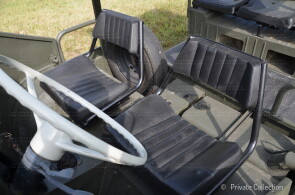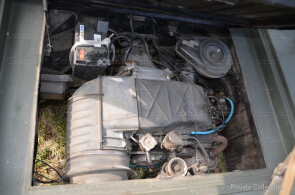
1966 Iso Rivolta Centomila
ON/OFF
Why am I an Automotive Masterpiece?
Iso Rivolta has its origins in the Isothermos of Bolzaneto (GE), a factory of electric heaters and coolers, purchased by the engineer Renzo Rivolta in 1939 and moved to Bresso in 1942, after a bombing of Genoa had destroyed the factories. Immediately after the end of the war, Renzo Rivolta decided to direct his company to the production of motorcycles, a type of market which in those years offered excellent commercial outlets. In the early fifties Renzo Rivolta was thinking about a qualitative leap: in fact, he wanted to create a vehicle that was halfway between the motorcycle and the car, in such a way as to bridge the gap between the classic motorcycle and the cheapest Italian car of the moment, i.e. the Fiat Topolino; in 1953, the groundbreaking Isetta was released. At the beginning of 1957, Iso ended its activity in the microcar and motorcycle sector. Renzo Rivolta decided to make a new change of course and focused on the restricted market of high-end touring cars. In the second half of the 1960s Piero Rivolta oversaw the “casa del grifone”, following the death of his father Renzo. The core business, by now, was the granturismo, equipped with powerful engines of US origin, but the ISO management never stopped thinking about diversifying production.
The only example of the ISO 100.000 series is a registered off-road vehicle created by Iso, powered by Fiat. The project was born in 1961 at the Iso Rivolta in Milan. The technical office wanted to create a light transport vehicle for agriculture, to satisfy the range market of light off-road vehicles. It was thus equipped with wheels with clawed treads, suspension with long travel and an innovative differential control system; despite the off-road qualities, the traction was only on the rear wheels. The Iso 100.000 was fitted with the two-cylinder Fiat-derived from the 500 Giardiniera; the idea was to create a joint venture with Fiat and take advantage of the Turin-based manufacturer's service and spare parts network. The prototype was designed by Pierluigi Raggi and set up by Gianni Recalcati; once completed, the car was sent to the Fiat technical office for approval. The car was liked but did not continue in production as Fiat aimed at the Iso share package; at the request to buy the majority, Eng. Rivolta, president and founder of ISO, refused the offer, and ISO 100,000 returned to Milan. The small off-road vehicle remained registered with chassis number 100001 and was used as a service car for small transports.




